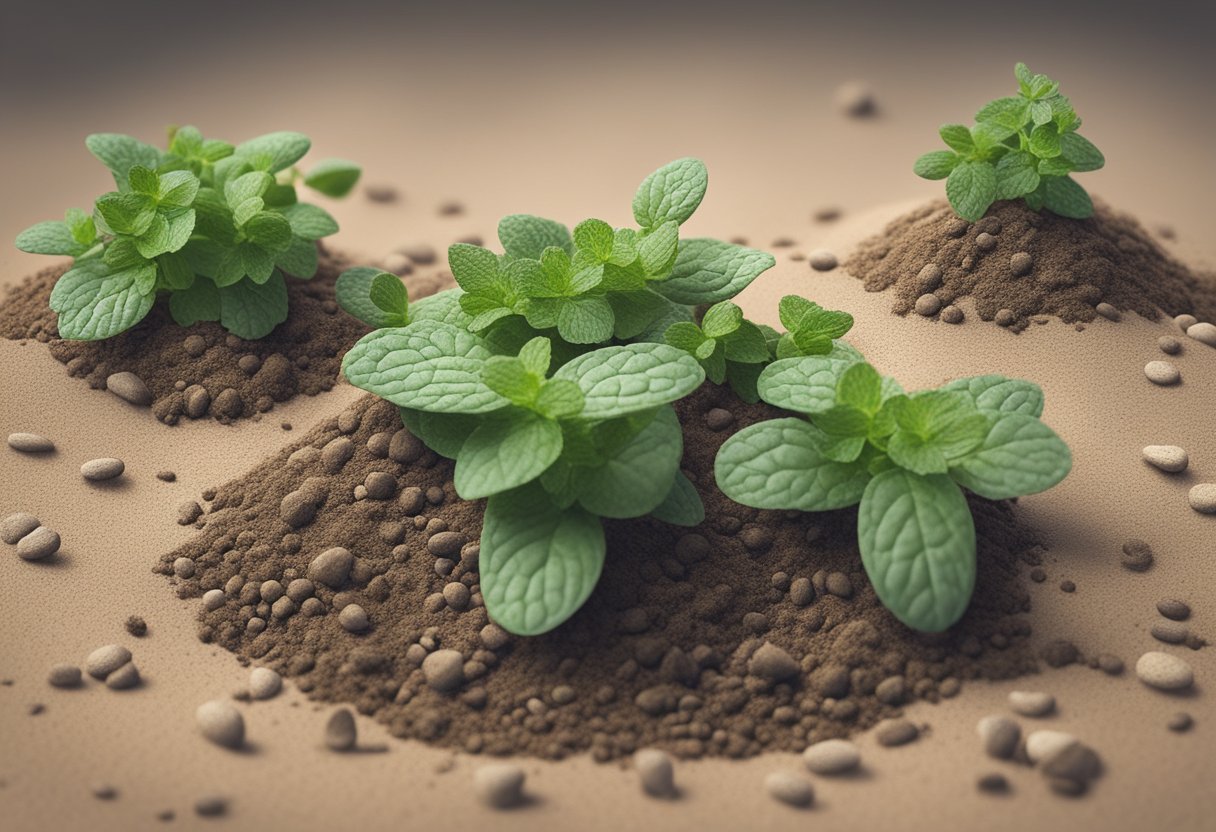Growing mint in a home garden is a rewarding experience that offers gardeners a fresh supply of this fragrant, versatile herb. However, sometimes the mint plant may not perform as expected, leading to a common concern: small mint leaves. When mint leaves remain tiny, it directly affects the quantity and quality of the harvest. Healthy mint leaves should be lush and large, indicative of a thriving plant.

In my experience tending to various herbs including mint, the size of the mint leaves can be a sign of the overall health and growing conditions of the plant. Mint plants require proper care, which encompasses adequate sunlight, water, and nutrients. When any of these are less than optimal, it can lead to underwhelming leaf growth. Let’s address why mint leaves can be small and outline actionable steps to encourage larger leaves.
JUMP TO TOPIC
Cultivating Mint in the Right Conditions
Mint is a hardy plant that requires specific conditions to thrive. These include quality soil with the correct pH, optimal light and temperature, and proper watering techniques.
Assessing Soil Quality and pH Levels
Mint prefers fertile soil that’s moist and well-draining. This means ensuring the soil isn’t too compacted or soggy. I always conduct a soil test to determine nutrient levels and pH—a neutral pH between 6.0-7.0 is ideal.
Ensuring Adequate Sunlight and Temperature
Mint requires plenty of light to grow large, lush leaves. It should receive 4-6 hours of sunlight daily. Temperature also plays a vital role; maintaining an ambient temperature between 65-70° F (about 18-21° C) promotes optimal growth.
Watering Techniques for Optimal Moisture
Water is crucial, but mint doesn’t like to sit in water. I aim for consistent moisture by checking the top inch of the soil before watering again. Overwatering is a common mistake, leading to smaller leaves.
Avoid letting mint dry out; inconsistent moisture makes it stressed.
Proper Mint Plant Care and Maintenance
To ensure your mint leaves reach their full potential, grasp the specifics of pruning and addressing common issues with precision and care.
Pruning and Trimming for Healthier Growth
Regular pruning is essential to promote bushier growth and larger leaves in mint plants. I trim my mint plants to encourage a more robust form, focusing on removing the top growth to stimulate production from the sides. It’s advisable to start pruning when the plant reaches about 4 to 6 inches in height and continuously throughout the growing season. Here’s my approach:
- Use clean, sharp scissors or pruning shears.
- Snip off the tip from the main stem to encourage lateral growth.
- Remove any dry or yellowing leaves to maintain plant health.
- Harvest leaves regularly but never remove more than one-third of the plant at a time.
Managing Pests and Common Problems
I vigilantly monitor for common pests such as aphids, spider mites, and thrips, which can stunt growth and result in small leaves. Organic measures like introducing beneficial insects or spraying neem oil are effective in my garden. Too much fertilizer can harm your mint, leading to weak growth and small leaves. Instead, I use organic material like compost to enrich the soil annually, which provides a balanced diet for the plants.
- Inspect plants regularly for signs of pests.
- Introduce beneficial insects like ladybugs for natural aphid control.
- Apply neem oil as a deterrent for mites and thrips.
- Avoid excess fertilizer; use compost for nutrients.
Avoid the use of synthetic pesticides and excessive fertilizers, as they may harm not only the pests but also the beneficial organisms that support the garden’s ecosystem.
Maximizing Mint Growth and Preventing Issues
Mint plants can thrive and produce abundant, large leaves if given the right care. Managing root space and providing the proper nutrients are the cornerstones of healthy growth.
Selecting Containers and Managing Root Space
Choosing the right container is vital for mint’s growth. Mint plants spread quickly and can become root-bound if the pot is too small, restricting their growth and making leaves smaller. For healthy growth, I recommend using a large pot with a minimum width and depth of 12 inches to allow for ample root development. Bottomless containers can also be employed to permit spreading without risk of the plant becoming root-bound.
Fertilization Strategies for Robust Mint Plants
Mint requires a balanced mix of nutrients to flourish. An all-purpose fertilizer can support overall health, but it’s important to balance nitrogen, phosphorus, and potassium to encourage lush foliage without excess leggy growth. Fertilize mint every few weeks during the growing season, diluting the fertilizer to half the recommended strength.
| Component | Role | Recommendation |
|---|---|---|
| Nitrogen | Leaf Growth | Moderate |
| Phosphorus | Root Development | Moderate |
| Potassium | Overall Health | Moderate |
Use organic options like manure or compost to improve soil structure and provide a slow-release of nutrients. It’s essential not to over-fertilize as this can lead to poor plant health and small leaves.
Regularly check for signs of nutrient deficiency or excess and adjust your fertilization practices accordingly.












